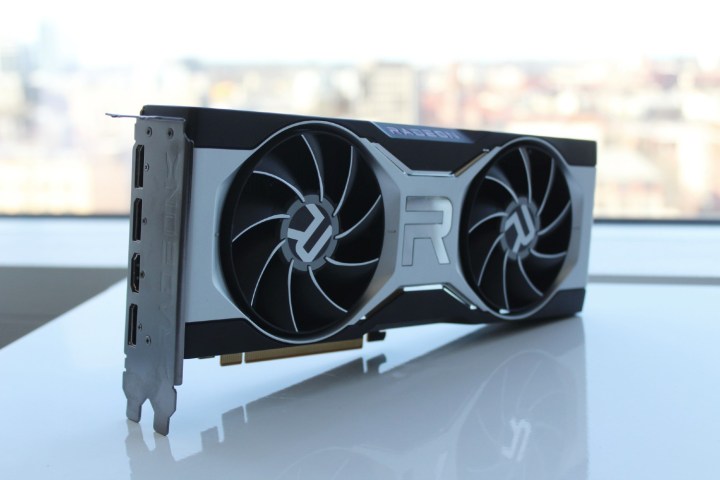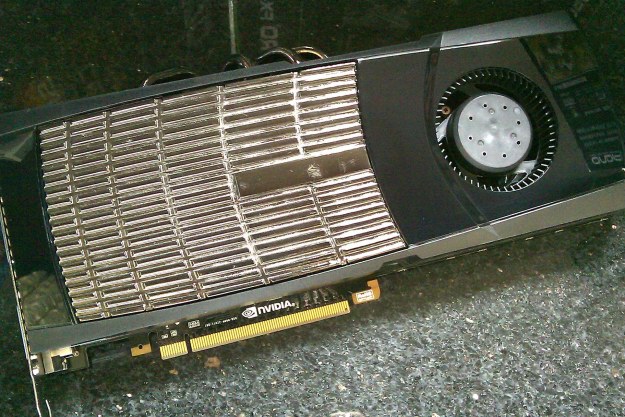As if landing a new graphics card wasn’t hard already, now we have another problem to deal with. After chip shortages that have plagued the semiconductor industry forcing gamers to pay sky-high markups for valuable and limited inventory of graphics cards, we’re now learning that fake GPUs could be hitting the market soon.
These counterfeit GPUs are stealthy enough to fool both buyers and manufacturers, meaning it’s hard to know who to trust. That’s the last thing you want to hear, especially after shelling out marked-up prices on a new RTX 3080 Ti.
Why fake GPUs are nearly impossible to spot

Counterfeit electronics are nothing new in the tech world, with knock-off iPhones having made headlines before. But fake GPUs are affecting both consumers and manufacturers. While fake iPhones are entirely counterfeited, including the case, internal electronics, the operating system that’s skinned to look like Apple’s iOS, and even the packaging — the worrying news about fake GPUs is that manufacturers may inadvertently use counterfeited components. That includes the chips and transistors used to make the card.
In this case, while the card itself isn’t “faked” to the level of knock-off iPhones, they’re made with substandard components that, according to Independent Distributors of Electronics Association founder Steve Calabria, could impact the performance, longevity, and reliability of the graphics cards, Ars Technica reported.
Most manufacturing companies — like Asus, MSI, and others — have policies and practices in place to ensure that they don’t buy counterfeit chips and components. But given the huge demand and constrained supplies of GPUs on the market, some smaller manufacturers may not be as diligent in weeding out the fakes, as pointed out by a counterfeit electronics researcher in that same report.
In the best worst-case scenario with counterfeits, once there are enough reports of products failing, companies may be forced to do a recall. If that happens, they’ll have to get replacement orders out the door while at the same time trying to fulfill new orders, causing an even greater strain on an already delicate supply-side situation.
How to protect yourself from fakes

Spotting a counterfeit isn’t easy, as it requires identifying fake components from a disassembled graphics card. However, you can take a few steps to help ensure that if something goes wrong, you’ll be covered.
First, even if you’re desperate in trying to get your hands on one of the latest GPUs from AMD or Nvidia, avoid resellers and secondary market and only purchase from a reputable dealer. That means big retailers like Best Buy, Amazon, Newegg, or directly from a manufacturer.
Some marketplaces, like eBay, offer some sort of limited purchase protection, though not all do, and the resellers themselves may not offer a comprehensive return policy. As we’ve seen recently, a lot of the resellers on these secondary markets are scalpers, not actual stores, who are only looking to turn over a quick profit.
Second, if possible, use a form of payment that offers some sort of extended return policy 0r purchase protection beyond what’s covered by either your favorite retailer or from the manufacturer. Some credit cards, especially more premium ones with annual fees, offer some sort of purchase protection, so you may want to inquire with your financial institution to see what’s covered and what’s excluded before you make your purchase.
Some of these credit cards offer a 90- or 120-day purchase protection period, and a few either double the manufacturer warranty or cover you for an additional year on top of what was offered. That said, many of these policies come with exclusions and some won’t cover you if they deem you purchased a used — rather than new out of the box — GPU, and some sites and retailers may be excluded.
Additionally, using a payment site like PayPal to complete the transaction could also add some peace of mind if there’s something wrong with the transaction, like if the graphics card never arrives or arrives in a different state than what you expected.
And third, if you’re buying locally through sites and marketplaces like Craigslist, use common sense to ensure that you and your wallet are safe. If a deal appears too good to be true, it probably is a scam. And even if your gut tells you that it’s a safe buy, you should still be wary. Unlike fake iPhones, fake chips inside GPUs are extremely difficult to spot. Some of these GPUs may power on and run smoothly, but over time, shoddy components may cause them to degrade more quickly than standard components.
Editors' Recommendations
- As a lifelong PC gamer, these are the apps I couldn’t live without
- GPUs just broke a 25-year-old record
- The best GPUs if you’re upgrading from a GTX 1650
- The best PC gaming hardware of 2023: GPUs, CPUs, monitors, and more
- Graphics terms every PC gamer should know



